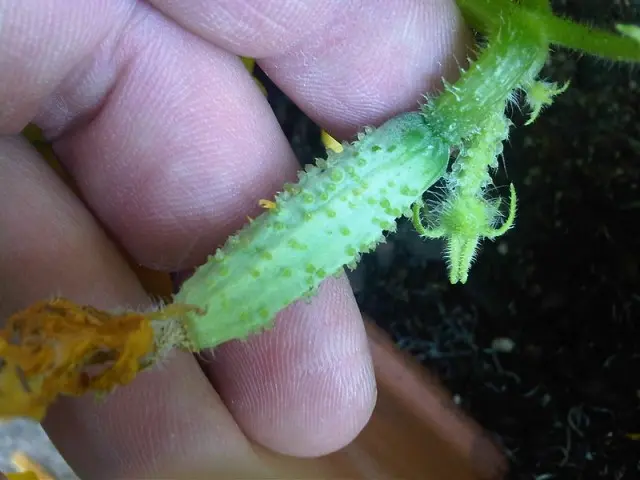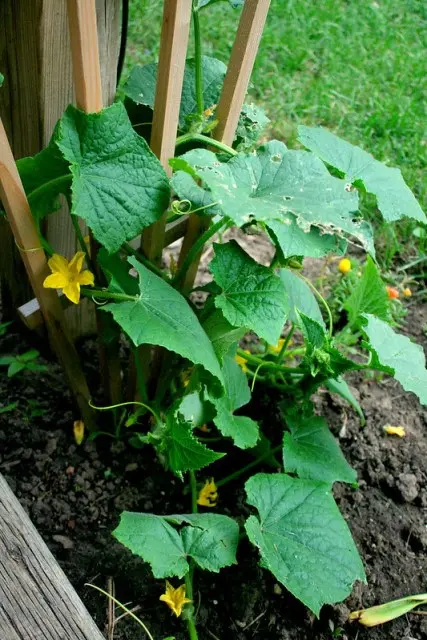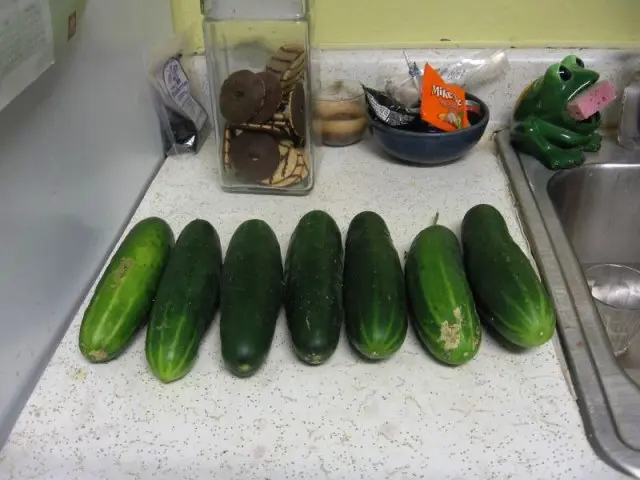Cucumbers are a popular and refreshing addition to salads, sandwiches, and even pickles. Growing cucumbers in Florida can be a rewarding experience, but it comes with its own set of challenges due to the state’s unique climate and soil conditions. This comprehensive guide will provide you with the knowledge and tips you need to successfully cultivate delicious cucumbers in the Sunshine State.

Climate and Growing Seasons
Florida is known for its warm and tropical climate, which can be both an advantage and a challenge for cucumber growers. Understanding the climate and its impact on cucumbers is essential for a successful harvest.
- Temperature: Cucumbers thrive in warm temperatures. In Florida, you can grow cucumbers year-round, with the ability to grow them outdoors during the spring, summer, and fall. However, during the hot summer months, cucumber plants can suffer from heat stress. To mitigate this, consider planting heat-tolerant cucumber varieties, such as “Marketmore” or “Diva,” and provide shade during the hottest part of the day.
- Frost: Florida rarely experiences frost, especially in the southern parts of the state. This means you can grow cucumbers throughout the winter in South Florida. In the northern regions of the state, be aware of occasional frosts, and plan your cucumber planting accordingly.
- Rainfall: Florida experiences a wet season during the summer months, with frequent afternoon thunderstorms. While cucumbers need consistent moisture, too much water can lead to fungal diseases. To manage this, consider growing cucumbers in raised beds or containers and providing proper drainage.
Soil Conditions
Florida’s soil can vary significantly depending on the region, but it’s typically characterized by sandy soil with low organic matter content. Proper soil preparation is crucial for cucumber cultivation.
- Soil Testing: Before planting cucumbers, it’s essential to perform a soil test to determine its pH and nutrient levels. Most cucumbers prefer a slightly acidic soil with a pH level between 6.0 and 6.8. If your soil’s pH is too high, you can lower it by adding elemental sulfur, while lime can be added to raise it if it’s too low.
- Organic Matter: Florida’s sandy soil lacks the organic matter that cucumbers need to thrive. Incorporate organic matter such as compost, well-rotted manure, or peat moss into the soil to improve its fertility, water retention, and structure. This will help your cucumbers access essential nutrients and retain moisture during the hot and dry periods.
- Soil Drainage: Good drainage is crucial to prevent waterlogged soil, which can lead to root rot and other diseases. Raised beds can help improve drainage in areas with poor natural drainage.
- Nutrient Management: Cucumbers are heavy feeders, and they require a balanced supply of essential nutrients, including nitrogen, phosphorus, and potassium. In addition to adding compost or well-rotted manure, consider using a balanced, slow-release fertilizer to provide the necessary nutrients to your cucumber plants.
Variety Selection
Choosing the right cucumber varieties is key to a successful harvest. Different cucumber types are suitable for various purposes, such as fresh eating, pickling, or slicing.
- Common Cucumber Types: a. Slicing Cucumbers: These cucumbers are typically larger, with thick skins, and are ideal for slicing into salads and sandwiches. Varieties like “Marketmore” and “Straight Eight” are well-suited for Florida’s climate.b. Pickling Cucumbers: These cucumbers are smaller, with thin skins and a crisp texture, making them perfect for pickling. Consider growing varieties like “Homemade Pickles” or “Boston Pickling.”
- Disease Resistance: Select cucumber varieties that are known to be disease-resistant, especially against common Florida cucumber diseases like powdery mildew and downy mildew. Disease-resistant varieties reduce the need for chemical treatments and increase your chances of a successful harvest.
Planting and Care

- Planting: Cucumbers can be grown from seeds or transplants. In Florida, you can start cucumber seeds indoors 2-4 weeks before the last expected frost date or sow them directly in the garden. If using transplants, be sure to acclimate them to outdoor conditions before planting.
- Spacing: Proper spacing is essential to ensure good airflow and prevent the spread of diseases. Plant cucumbers 12-24 inches apart in rows, with rows spaced 3-5 feet apart.
- Trellising: To save space and promote healthy growth, consider trellising your cucumber plants. This also helps keep the fruit off the ground, reducing the risk of diseases and making it easier to harvest.
- Watering: Cucumbers need consistent moisture. Water them deeply and regularly, aiming to keep the soil consistently moist but not waterlogged. Drip irrigation can be an efficient way to ensure even watering.
- Mulching: Apply a layer of organic mulch, such as straw or shredded leaves, around your cucumber plants to help conserve moisture, regulate soil temperature, and suppress weeds.
- Fertilization: Cucumbers benefit from regular feeding. Apply a balanced, slow-release fertilizer according to the package instructions or use a side-dressing method during the growing season.
Pest and Disease Management
Florida’s warm and humid climate can attract various pests and diseases that can harm your cucumber plants. To protect your crop:
- Pests: Common cucumber pests in Florida include aphids, cucumber beetles, and spider mites. Regularly inspect your plants and use organic pest control methods, such as neem oil or insecticidal soap, to manage infestations.
- Diseases: Fungal diseases, like powdery mildew and downy mildew, can be particularly problematic in Florida’s climate. Plant disease-resistant cucumber varieties, provide proper spacing for good air circulation, and apply fungicides as needed to prevent and manage these diseases.
Harvesting and Storage

Cucumbers are typically ready for harvest within 50-70 days after planting. To ensure the best quality and flavor:
- Harvesting: Pick cucumbers when they are firm and the skin is shiny. For slicing cucumbers, harvest them when they reach 6-8 inches in length. For pickling cucumbers, pick them when they are 2-4 inches long.
- Regular Harvesting: Regularly pick mature cucumbers to encourage the plant to produce more fruit. Leaving overripe cucumbers on the plant can slow down production.
- Storage: Cucumbers are best enjoyed fresh, but if you have an excess, you can store them in the refrigerator for up to a week. Keep them in a plastic bag to maintain their crispness.
Conclusion
Growing cucumbers in Florida can be a rewarding endeavor if you understand the state’s unique climate and soil conditions. By selecting the right cucumber varieties, preparing your soil, and providing proper care and maintenance, you can enjoy a bountiful cucumber harvest throughout the year. With proper planning and dedication, you can savor the taste of homegrown cucumbers, whether you’re using them in salads, sandwiches, or for making delicious pickles.
MORE POSTS:
How to grow romaine lettuce from stalk?
